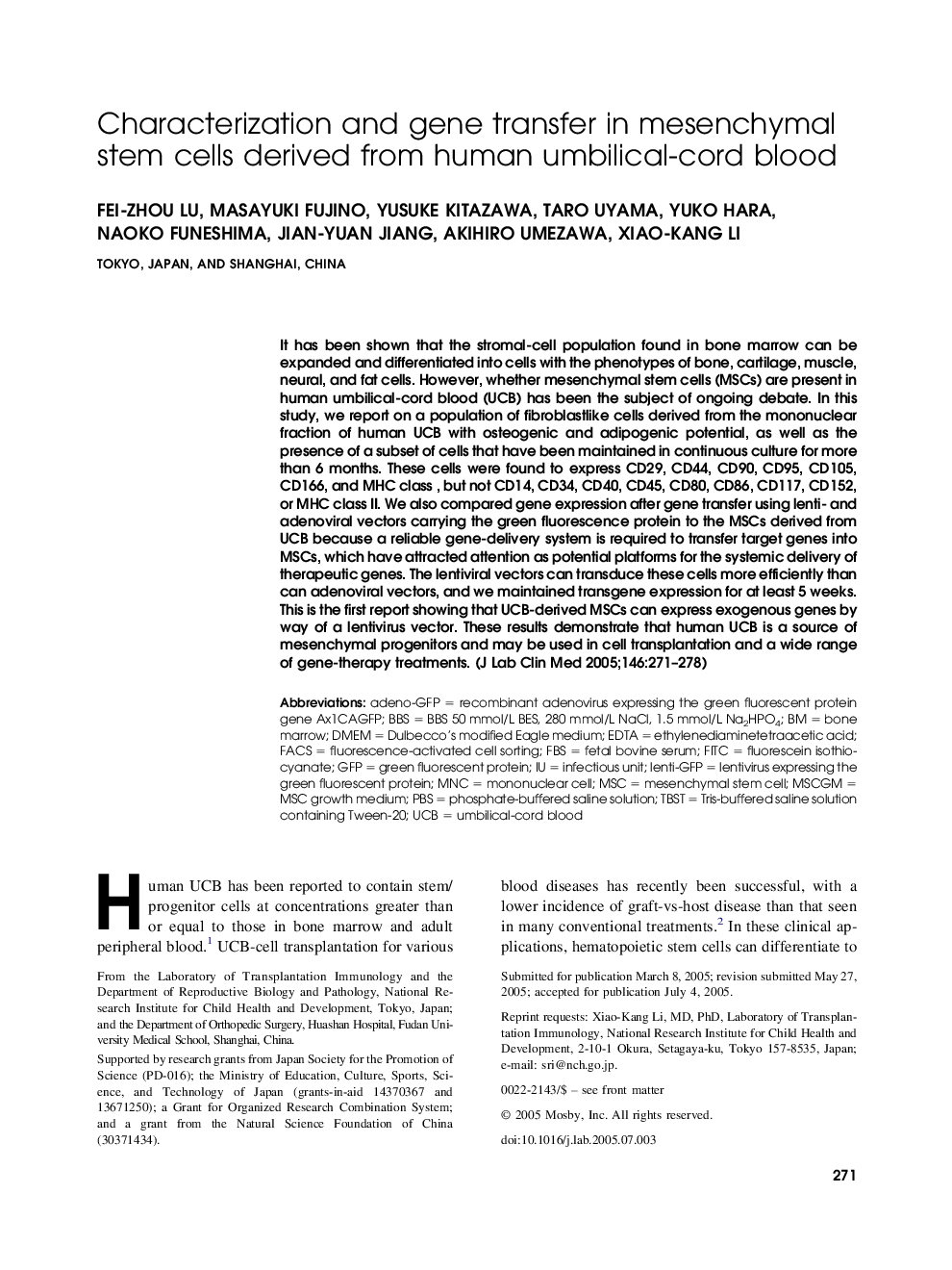| کد مقاله | کد نشریه | سال انتشار | مقاله انگلیسی | نسخه تمام متن |
|---|---|---|---|---|
| 9296375 | 1233528 | 2005 | 8 صفحه PDF | دانلود رایگان |
عنوان انگلیسی مقاله ISI
Characterization and gene transfer in mesenchymal stem cells derived from human umbilical-cord blood
دانلود مقاله + سفارش ترجمه
دانلود مقاله ISI انگلیسی
رایگان برای ایرانیان
کلمات کلیدی
FACSMNCTBSTBBSMSCUCBPBSGFPFITCFBSDMEMDulbecco’s modified Eagle medium - Modified Eagle اصلاح شده DulbeccoEDTA - اتیلن دی آمین تترا استیک اسید Ethylenediaminetetraacetic acid - اتیلینیدامین تتراستیک اسیدfluorescence-activated cell sorting - دسته بندی سلول های فعال فلورسنسfetal bovine serum - سرم جنین گاوmononuclear cell - سلول تک هسته ایMesenchymal stem cell - سلول های بنیادی مزانشیمیfluorescein isothiocyanate - فلوئورسین ایسوتیوسیاناتphosphate-buffered saline solution - محلول نمک فسفات بافرbone marrow - مغز استخوانinfectious unit - واحد عفونیgreen fluorescent protein - پروتئین فلورسنت سبز
موضوعات مرتبط
علوم پزشکی و سلامت
پزشکی و دندانپزشکی
پزشکی و دندانپزشکی (عمومی)
پیش نمایش صفحه اول مقاله

چکیده انگلیسی
It has been shown that the stromal-cell population found in bone marrow can be expanded and differentiated into cells with the phenotypes of bone, cartilage, muscle, neural, and fat cells. However, whether mesenchymal stem cells (MSCs) are present in human umbilical-cord blood (UCB) has been the subject of ongoing debate. In this study, we report on a population of fibroblastlike cells derived from the mononuclear fraction of human UCB with osteogenic and adipogenic potential, as well as the presence of a subset of cells that have been maintained in continuous culture for more than 6 months. These cells were found to express CD29, CD44, CD90, CD95, CD105, CD166, and MHC class, but not CD14, CD34, CD40, CD45, CD80, CD86, CD117, CD152, or MHC class II. We also compared gene expression after gene transfer using lenti- and adenoviral vectors carrying the green fluorescence protein to the MSCs derived from UCB because a reliable gene-delivery system is required to transfer target genes into MSCs, which have attracted attention as potential platforms for the systemic delivery of therapeutic genes. The lentiviral vectors can transduce these cells more efficiently than can adenoviral vectors, and we maintained transgene expression for at least 5 weeks. This is the first report showing that UCB-derived MSCs can express exogenous genes by way of a lentivirus vector. These results demonstrate that human UCB is a source of mesenchymal progenitors and may be used in cell transplantation and a wide range of gene-therapy treatments.
ناشر
Database: Elsevier - ScienceDirect (ساینس دایرکت)
Journal: Journal of Laboratory and Clinical Medicine - Volume 146, Issue 5, November 2005, Pages 271-278
Journal: Journal of Laboratory and Clinical Medicine - Volume 146, Issue 5, November 2005, Pages 271-278
نویسندگان
Fei-Zhou Lu, Masayuki Fujino, Yusuke Kitazawa, Taro Uyama, Yuko Hara, Naoko Funeshima, Jian-Yuan Jiang, Akihiro Umezawa, Xiao-Kang Li,